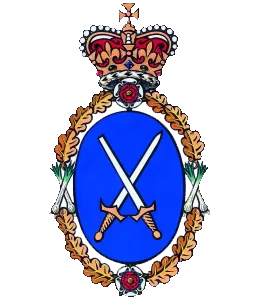The north-western part of the county of Rutland was recorded as Rutland, a detached part of Nottinghamshire, in the Domesday Book; the south-eastern part as the wapentake of Wicelsea in Northamptonshire. It was first mentioned as a separate county in 1159, but as late as the 14th century it was referred to as the ‘Soke of Rutland’.

One of the most notable buildings in Rutland is Oakham Castle, most likely built by Walkelin de Ferrers in the late twelfth century. The splendid Great Hall is one of the finest examples of late 12th century domestic architecture in England. The Great Hall is best known for its collection of commemorative Horseshoes.

The hall is decorated with a range of 12th century sculptures. Above the columns are six musicians, each playing a different instrument. They are made of local stone from Clipsham and although damaged, they are of superb quality. They are believed to have been carved by masons who had worked at Canterbury Cathedral.
In 1584, Archdeacon Johnson founded and endowed Oakham and Uppingham Schools together with almshouses in both towns. Both of the original schoolrooms survive, and the one in Oakham remains an integral part of the School today. Both Schools are flourishing in the 21st century.
Under the Local Government Act of 1972, in 1974 Rutland was absorbed into the new non-metropolitan county of Leicestershire. However, this change was relatively short lived. In 1994, the Local Government Commission for England, recommended that Rutland become a Unitary Authority. This was implemented on April 1, 1997, with Rutland regaining a separate Lieutenancy and Shrievalty, as well as its council regaining control of county functions such as education and social services. The Council remains formally a non-metropolitan district council.
